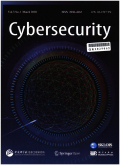- 钛学术文献服务平台 \
- 学术期刊 \
- 工业技术期刊 \
- 自动化技术与计算机技术期刊 \
- 网络空间安全科学与技术(英文版)期刊 \
A novel feature extraction methodology using Siamese convolutional neural networks for intrusion detection
A novel feature extraction methodology using Siamese convolutional neural networks for intrusion detection
基本信息来源于合作网站,原文需代理用户跳转至来源网站获取
摘要:
Intrusion detection systems(IDS)can play a significant role in detecting security threats or malicious attacks that aim to steal information and/or corrupt network protocols.To deal with the dynamic and complex nature of cyber-attacks,advanced intelligent tools have been applied resulting into powerful and automated IDS that rely on the latest advances of machine learning(ML)and deep learning(DL).Most of the reported effort has been devoted on building complex ML/DL architectures adopting a brute force approach towards the maximization of their detection capacity.However,just a limited number of studies have focused on the identification or extraction of user-friendly risk indicators that could be easily used by security experts.Many papers have explored various dimensionality reduction algorithms,however a large number of selected features is still required to detect the attacks successfully,which humans cannot intuitively or immediately understand.To enhance users trust and understanding on data without sacrificing on accuracy,this paper contributes to the transformation of the available data collected by IDS into a single actionable and easy-to-understand risk indicator.To achieve this,a novel feature extraction pipeline was implemented consisting of the following components:(i)a fuzzy allocation scheme that transforms raw data to fuzzy class memberships,(ii)a novel modality transformation mechanism for converting feature vectors to images(Vec2im)and(iii)a dimensionality reduction module that makes use of Siamese convolutional neural networks that finally reduces the input data dimensionality into a 1-d feature space.The performance ofthe proposed methodology was validated with respect to detection accuracy,dimensionality reduction performance andexecution time on the NSL-KDD dataset via a thorough comparative analysis that demonstrated its effectiveness(86.64%testing accuracy using only one feature)over a number of well-known feature selection(FS)and extraction techniques.Theoutput of the proposed feature extraction pipeline could be potentially used by security experts as an indicator of maliciousactivity,whereas the generated images could be further utilized and/or integrated as a visual analytics tool in existing IDS.

推荐文章
Shadow–highlight feature matching automatic small crater recognition using high-resolution digital o
Moon
Crater recognition
Image processing
Space exploration
基于recurrent neural networks的网约车供需预测方法
长短时记忆循环神经网络
网约车数据
交通优化调度
TensorFlow
深度学习
内容分析
关键词云
关键词热度
相关文献总数
(/次)
(/年)
文献信息
| 篇名 | A novel feature extraction methodology using Siamese convolutional neural networks for intrusion detection | ||
| 来源期刊 | 网络空间安全科学与技术(英文版) | 学科 | |
| 关键词 | |||
| 年,卷(期) | 2020,(3) | 所属期刊栏目 | |
| 研究方向 | 页码范围 | 61-73 | |
| 页数 | 13页 | 分类号 | |
| 字数 | 语种 | 英文 | |
| DOI | |||
五维指标
引文网络
引文网络
二级参考文献 (0)
共引文献 (0)
参考文献 (16)
节点文献
引证文献 (0)
同被引文献 (0)
二级引证文献 (0)
1995(1)
- 参考文献(1)
- 二级参考文献(0)
1997(2)
- 参考文献(2)
- 二级参考文献(0)
2001(1)
- 参考文献(1)
- 二级参考文献(0)
2005(1)
- 参考文献(1)
- 二级参考文献(0)
2010(1)
- 参考文献(1)
- 二级参考文献(0)
2012(2)
- 参考文献(2)
- 二级参考文献(0)
2014(2)
- 参考文献(2)
- 二级参考文献(0)
2015(2)
- 参考文献(2)
- 二级参考文献(0)
2016(1)
- 参考文献(1)
- 二级参考文献(0)
2017(1)
- 参考文献(1)
- 二级参考文献(0)
2019(1)
- 参考文献(1)
- 二级参考文献(0)
2020(1)
- 参考文献(1)
- 二级参考文献(0)
2020(1)
- 参考文献(1)
- 二级参考文献(0)
- 引证文献(0)
- 二级引证文献(0)
引文网络交叉学科
相关学者/机构
期刊影响力
网络空间安全科学与技术(英文版)
主办单位:
中国科学院信息工程研究所
出版周期:
季刊
ISSN:
2096-4862
CN:
10-1537/T
开本:
出版地:
邮发代号:
创刊时间:
语种:
eng
出版文献量(篇)
54
总下载数(次)
0
总被引数(次)
0
期刊文献
相关文献
推荐文献

 免费查重
免费查重










